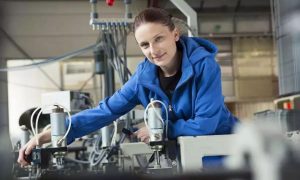Mechanical wear can occur in machining due to a variety of reasons such as workpiece material, environment, and processing methods. Mechanical wear can be very harmful to the quality, accuracy and efficiency of the product. Therefore, it is very important for everyone who performs machining to do a good job of preventing mechanical machining.

1. Common types and characteristics of mechanical wear
1) Run-in wear
The corresponding wear of machinery under normal load, speed and lubrication conditions, this kind of wear develops very slowly.
2)Hard particle wear
The abrasive particles falling from the part itself and the hard particles entering from outside cause mechanical cutting or grinding and damage the part.
3) Surface fatigue wear
Under the action of alternating load, the production of tiny cracks, class point-like crater, and damage to the parts. Such wear and pressure size, load characteristics, machine materials, size chip factors.
4) thermal wear
Parts in the friction process, the metal surface wear and internal matrix to produce a hot area or high temperature, so that the parts have tempering softening, scorching creases and other phenomena, often occurring in high-speed and high-pressure sliding friction, the destructive nature of wear is more prominent, and accompanied by the nature of accidental wear.
5) Corrosion wear
Chemical corrosion caused by wear, parts surface by acid, alkali, salt liquid or harmful gas erosion, or parts surface and oxygen combined to generate easy to fall off the hard and brittle metal oxides and parts wear.
6) phase change wear
Parts work at high temperatures for a long time, the surface of the parts of the metal tissue grain size, oxidation around the grain boundary to produce small gaps, making the parts fragile, wear resistance decreases, accelerate the wear of parts.
7) Hydrodynamic wear
By the liquid speed or particle flow rate impact on the surface of the parts caused by the wear of the parts surface.
2. parts wear causes and their prevention methods
(1) normal wear
1) mutual friction between parts: ensure the cleanliness and lubrication of the parts
2) wear caused by hard particles: keep the parts clean cover the exposed part of the parts
3) fatigue wear of parts caused by long-term alternating load: eliminate gaps, select suitable lubricating grease, reduce additional vibration, and improve the accuracy of parts.
4)Corrosion of parts by chemical substances: remove harmful chemical substances and improve the corrosion resistance of parts
5) the high temperature conditions of the parts surface metallographic organization changes or with the nature of change: try to improve the working conditions, or the use of high temperature, wear-resistant materials to produce parts.
(2) abnormal wear
1) repair or manufacturing quality does not meet the design requirements: strict quality inspection.
2) violation of operating procedures: familiar with the mechanical properties, careful operation.
3) transport, loading and unloading, improper storage: master the lifting knowledge, careful operation.
3. mechanical life after overhaul shortened causes and measures
1)Deformation of basic parts
As the deformation changes the relative position of the parts, accelerate the wear and tear of the parts, shorten the life of the parts. Can take reasonable installation and adjustment, deformation prevention.
2) Parts balance damage
High-speed rotating parts are unbalanced, accelerating the damage of parts under the action of centrifugal force and shortening the life of parts. The use of strict dynamic balance test measures to prevent.
3) Failure to perform wear and tear
Replacement parts with the surface is not reasonable grinding, with time, the amount of wear of the parts with the surface will increase, shortening the life of the parts. Preventive measures are to carry out grinding of the parts.
4) Low hardness
Repair parts improper selection of materials, the surface hardness can not reach, or heat treatment is not qualified. Preventive measures: select materials as required and carry out reasonable heat treatment.
